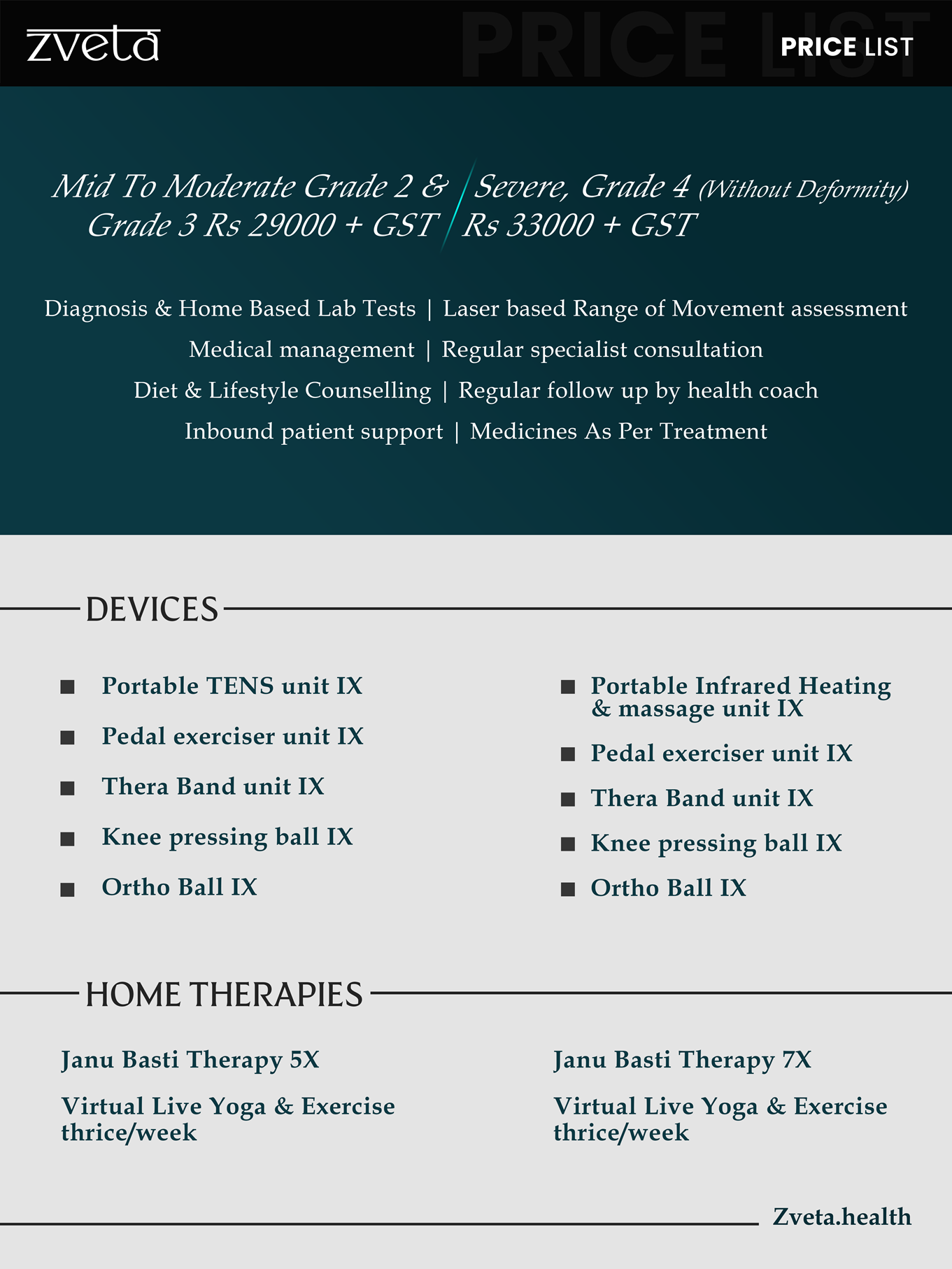Spondylosis, a degenerative disorder affecting the spine, is a prevalent source of pain and disability.
It encompasses conditions like osteoarthritis and degenerative disc disease, leading to pain, stiffness, and reduced mobility.
In this blog, we’ll delve into the history of spondylosis, its impact, effective methods for managing and alleviating the pain it causes, and innovative solutions offered by Zveta.health.
A Brief History of Spondylosis
Spondylosis, deriving from the Greek word “spondylos,” meaning vertebra, has been recognized for centuries. Historical texts, including the ancient Indian medical treatise, the Sushruta Samhita, mention spine-related ailments and their treatments.
Modern medical understanding of spondylosis, however, began in the early 20th century with advances in radiology and orthopaedics, allowing for detailed study of spinal degeneration.
Spondylosis in India: The Magnitude of the Problem
India, with its large population and diverse demographics, presents a unique landscape for studying spondylosis. The prevalence of this condition has been rising, influenced by factors such as ageing population, sedentary lifestyles, and increasing rates of obesity.
Statistics at a Glance
- Prevalence: According to a study published in the Journal of Clinical Orthopaedics and Trauma, approximately 17-25% of the Indian population over the age of 40 suffers from spondylosis.
- Age Factor: The prevalence increases with age, with nearly 60% of individuals above 60 years experiencing some form of spondylosis.
- Gender Disparity: Women, particularly post-menopausal, are more prone to cervical spondylosis due to hormonal changes affecting bone density.
Sources of Pain in Spondylosis
Spondylosis affects different regions of the spine: cervical (neck), thoracic (mid-back), and lumbar (lower back), with cervical and lumbar spondylosis being the most common. The pain and discomfort arise from several mechanisms:
- Degeneration of Intervertebral Discs: The discs lose hydration and elasticity, leading to reduced cushioning and increased friction between vertebrae.
- Bone Spurs (Osteophytes): As the body attempts to repair the damage, it forms bone spurs which can compress nerves and spinal cord, causing pain and neurological symptoms.
- Facet Joint Arthritis: The small joints between vertebrae become inflamed, leading to stiffness and pain.
- Spinal Stenosis: Narrowing of the spinal canal can compress nerves, resulting in pain, numbness, or weakness in limbs.
Managing and Alleviating Spondylosis Pain
Effective management of spondylosis involves a multi-faceted approach, combining medical, physical, and lifestyle interventions.
Medical Interventions
- Medications: Nonsteroidal anti-inflammatory drugs (NSAIDs), muscle relaxants, and corticosteroid injections can help manage pain and inflammation.
- Physical Therapy: Tailored exercises to strengthen the muscles supporting the spine, improve flexibility, and reduce pain.
- Surgical Options: In severe cases, surgical intervention such as laminectomy, discectomy, or spinal fusion may be necessary to relieve nerve compression.
Lifestyle Modifications
- Ergonomics: Proper ergonomics at work and home can prevent and alleviate spondylosis symptoms. Using supportive chairs, adjusting screen heights, and taking regular breaks can make a significant difference.
- Exercise: Regular low-impact exercises like walking, swimming, and yoga can strengthen the spine, improve flexibility, and reduce pain.
- Weight Management: Maintaining a healthy weight reduces the load on the spine, preventing further degeneration.
Alternative Therapies
- Ayurveda: Traditional Indian medicine offers treatments like Panchakarma, involving detoxification and herbal remedies to manage spondylosis symptoms.
- Acupuncture: This ancient practice can provide pain relief and improve mobility by stimulating specific points on the body.
Zveta.health: Innovating Chronic Disease Management
Get in touch with Zveta. At Zveta.health, we understand the challenges that come with chronic diseases, especially when they strike early, disrupting life plans and making everyday tasks demanding. Zveta is focused on finding evidence-based solutions by blending Ayurveda with modern medicine to create unique experiences that are life changing at the comfort of your home.
- Patient-centered care: We believe in prioritizing the individual needs and goals of each patient.
- Integrated approach: We combine traditional and alternative therapies to address the root cause of chronic conditions.
- Empowerment: We empower patients through education and personalized care plans.
- Evidence-based practice: Our treatment plans are based on the latest scientific research and best practices.
- Continuous improvement: We are dedicated to staying at the forefront of chronic disease treatment and improving our services to better serve our patients.
Conclusion
Spondylosis is a significant health concern in India, affecting millions and impacting their quality of life. Understanding its historical context, sources of pain, and effective management strategies is crucial for addressing this growing problem. Through a combination of medical treatments, physical therapy, lifestyle modifications, and innovative solutions offered by Zveta.health, individuals can find relief from spondylosis pain and improve their overall well-being. By raising awareness and promoting proactive measures, we can mitigate the impact of spondylosis on the Indian population, ensuring a healthier, pain-free future.


